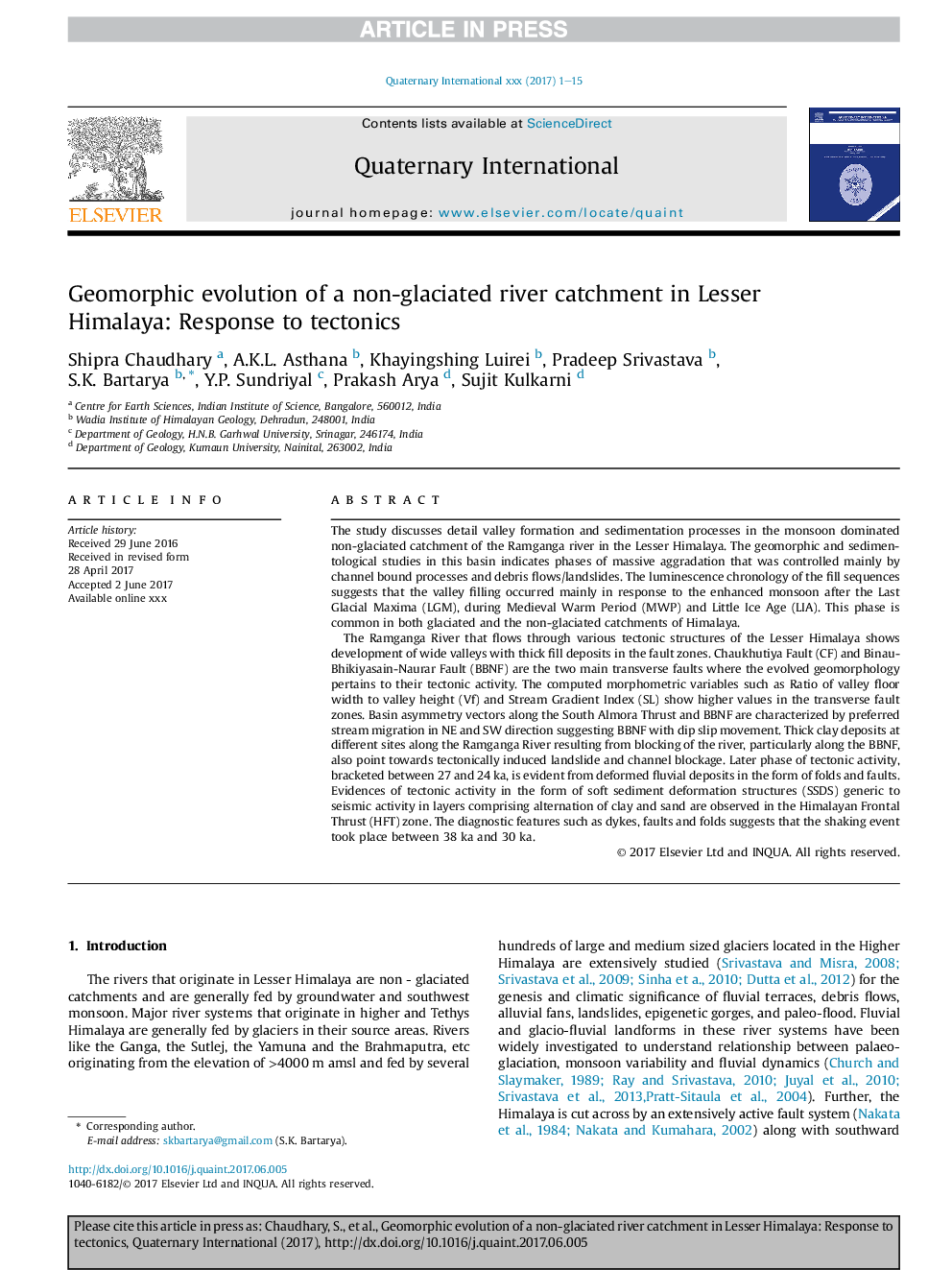| Article ID | Journal | Published Year | Pages | File Type |
|---|---|---|---|---|
| 7451124 | Quaternary International | 2017 | 15 Pages |
Abstract
The Ramganga River that flows through various tectonic structures of the Lesser Himalaya shows development of wide valleys with thick fill deposits in the fault zones. Chaukhutiya Fault (CF) and Binau-Bhikiyasain-Naurar Fault (BBNF) are the two main transverse faults where the evolved geomorphology pertains to their tectonic activity. The computed morphometric variables such as Ratio of valley floor width to valley height (Vf) and Stream Gradient Index (SL) show higher values in the transverse fault zones. Basin asymmetry vectors along the South Almora Thrust and BBNF are characterized by preferred stream migration in NE and SW direction suggesting BBNF with dip slip movement. Thick clay deposits at different sites along the Ramganga River resulting from blocking of the river, particularly along the BBNF, also point towards tectonically induced landslide and channel blockage. Later phase of tectonic activity, bracketed between 27 and 24 ka, is evident from deformed fluvial deposits in the form of folds and faults. Evidences of tectonic activity in the form of soft sediment deformation structures (SSDS) generic to seismic activity in layers comprising alternation of clay and sand are observed in the Himalayan Frontal Thrust (HFT) zone. The diagnostic features such as dykes, faults and folds suggests that the shaking event took place between 38 ka and 30 ka.
Related Topics
Physical Sciences and Engineering
Earth and Planetary Sciences
Geology
Authors
Shipra Chaudhary, A.K.L. Asthana, Khayingshing Luirei, Pradeep Srivastava, S.K. Bartarya, Y.P. Sundriyal, Prakash Arya, Sujit Kulkarni,
